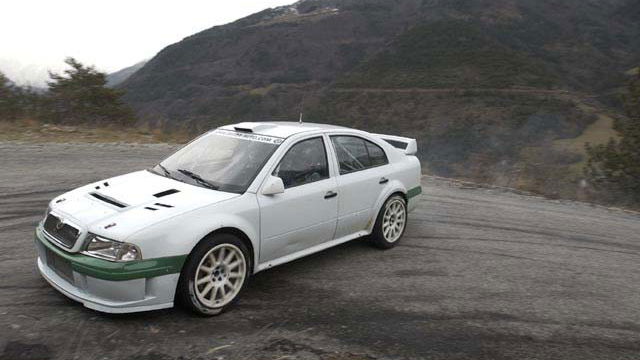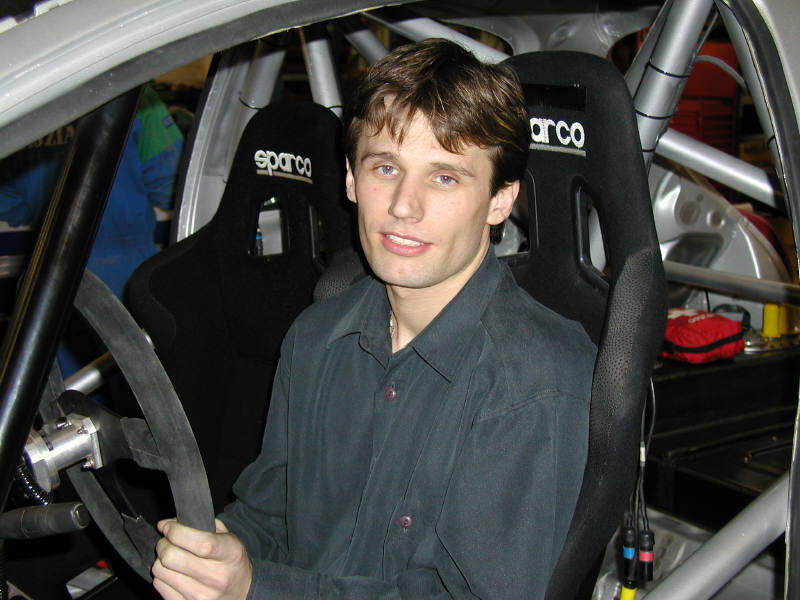Black magic with Skoda and Michelin.
They may be just small, black and round but tyres make the biggest single difference to the performance of any World Rally Car.
A lot of the time during the short winter break is devoted to testing tyres for the new season. Skoda Motorsport head to the opening round of the 2003 World Rally Championship eager to see the results of their hard work.

They may be just small, black and round but tyres make the biggest single difference to the performance of any World Rally Car.
A lot of the time during the short winter break is devoted to testing tyres for the new season. Skoda Motorsport head to the opening round of the 2003 World Rally Championship eager to see the results of their hard work.
On the Monte Carlo Rally, they make the difference between winning and losing. The Monte is well-known for its unpredictability, meaning that it's perfectly possible to start a stage in bright sunshine but end up in the middle of a snowstorm. Link several of these freakish stages together, and it's easy to see how vital it is to get the tyre choice right.
Monte Carlo is the most difficult rally of the year in terms of picking the right tyre. Skoda Motorsport's tyre partner, Michelin, bring a wide range of covers to the event, ranging from snow tyres with short studs to full dry asphalt racing tyres. Skoda Motorsport's Didier Auriol is one of the drivers who know the Monte Carlo Rally best, having won it three times.
"Knowing which tyres to pick is partly down to experience and partly down to good feeling. And of course there is always an element of luck as well!" he says. The gravel crews - who pass through the stages an hour or so before the competitors - are a vital source of information. "Their job is to check through our pace notes and make any additions to the notes as necessary," explains Auriol. "Typically on the Monte, they might warn me about new patches of ice that have cropped up, where I need to be careful under braking."
Monte Carlo is so slippery that it's not unheard of for some of the gravel crews to slide off the road whilst checking the notes on the stage! Most teams also employ weather crews, who will walk into the stage immediately before the drivers set off for it. So if you see a driver engrossed in conversation on his phone in a service area, he's probably talking to the weather crew rather than his wife!
Often drivers have to choose a compromise tyre for a loop of two or more stages. Maybe the tyre won't work so well on the first stage, but could go very well on the second. Or vice versa. Or possibly it's best to choose a tyre that will have a consistent - if not spectacular - performance on both stages. "It's a bit like playing chess," says Auriol. "There are so many factors you have to think about."
Most drivers will use up to a dozen sets of tyres during a rally, with each tyre being on the car for an average of about 60 kilometres. The drivers are helped in their tyre choice by a technician, whose job it is to know the characteristics of each tyre intimately. It takes between 150 and 200 'ingredients' to produce a Michelin tyre, so it's no surprise that they can be tailored to almost every surface. Michelin's motorsport boss Pierre Dupasquier says: "Rallying is a university for tyre engineers - we graduate eventually!"
Through rain, rocks, snow and desert the tyres have to be reliable. But Michelin have racked up 192 world rally victories since 1973, so Skoda has a winning team behind them. "Choosing the tyres is always tricky," concludes Auriol. "But the real fun starts when it's time to drive on them!"
